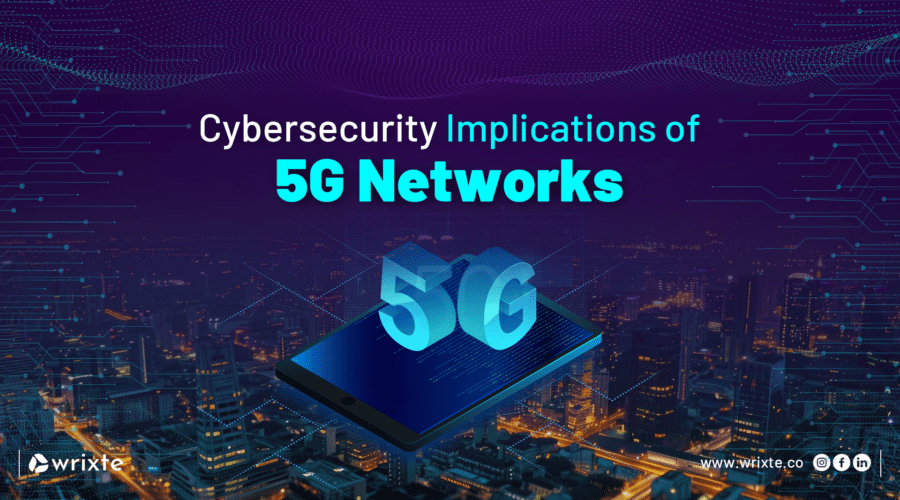The advent of 5G networks promises faster speeds, reduced latency, and greater connectivity than previous generations of mobile technology. However, alongside the benefits, 5G introduces new cybersecurity challenges that demand close attention. Unlike previous networks, 5G will power the growing ecosystem of IoT devices, autonomous systems, and critical infrastructure, making it a lucrative target for cyber threats. The unique architecture of 5G networks creates novel vulnerabilities that could have far-reaching implications across industries.
1. Expanded Attack Surface
5G networks support an exponentially higher number of connected devices compared to 4G. This capability extends far beyond smartphones and tablets, encompassing autonomous cars, smart homes, industrial robots, and healthcare devices. As a result, the attack surface is vastly expanded, creating more entry points for malicious actors. Each connected device can become a potential gateway for cybercriminals to infiltrate and compromise the network, making cybersecurity a more complex undertaking.
Furthermore, 5G relies heavily on software-defined networks (SDN) and network function virtualization (NFV). While these technologies offer flexibility, they also introduce new attack vectors. The increased dependence on software means that bugs, misconfigurations, or malicious code could lead to large-scale breaches, leaving networks vulnerable to both insider and outsider threats.
2. Network Slicing Vulnerabilities
One of the defining features of 5G is its ability to create virtual networks, or “network slices,” for different use cases, such as autonomous vehicles, telemedicine, and industrial IoT. While network slicing enhances operational efficiency by allocating bandwidth according to specific needs, it also raises concerns about isolation between slices. If the security of one slice is compromised, the attacker could potentially pivot across slices, gaining access to more sensitive network segments.
For example, in an industrial IoT setting, an attack on a less critical slice could serve as a springboard to infiltrate more secure segments handling critical infrastructure, resulting in devastating consequences. Ensuring robust isolation mechanisms between slices is vital to preventing such escalation of attacks.
3. Edge Computing Challenges
Another key characteristic of 5G is the move toward edge computing, where data is processed closer to the source (i.e., the device) rather than being sent to a centralized data center. This reduces latency and enhances real-time applications, but it also decentralizes data processing, increasing the number of vulnerable nodes.
Edge devices, such as sensors and smart meters, are often less secure than centralized infrastructure and may not have the same level of oversight or control. These devices can be exploited as weak points in the network. Attackers can compromise edge devices to inject malicious code, manipulate data streams, or disrupt services. Additionally, ensuring the security of data as it moves between edge devices and the core network becomes a major concern.
4. Supply Chain Risks
The deployment of 5G networks relies on complex supply chains involving multiple vendors and service providers. This introduces supply chain risks, as vulnerabilities can be introduced at various stages of development, manufacturing, and deployment. Many components of 5G infrastructure, from base stations to routers, may be sourced from third-party vendors, each with their own security practices—or lack thereof.
For instance, compromised hardware or firmware from a supplier can provide a backdoor for adversaries to infiltrate the network. Moreover, if a vendor fails to patch vulnerabilities promptly, it could expose the entire network to attacks. The global nature of 5G supply chains also introduces geopolitical considerations, as nations may hesitate to adopt hardware from foreign entities due to fears of espionage or sabotage.
5. Privacy Concerns
With 5G enabling pervasive data collection through billions of connected devices, privacy becomes an even greater concern. The vast amount of personal and sensitive data generated by IoT devices—such as location data, health metrics, and financial transactions—provides attackers with a rich pool of information to exploit. Data breaches or surveillance could lead to identity theft, financial fraud, or even government espionage.
The lack of strong data governance frameworks, especially in countries with lax privacy regulations, exacerbates the problem. Moreover, while 5G’s speed and bandwidth allow for advanced encryption methods, ensuring that these are universally implemented across all connected devices and networks remains a significant challenge.
6. State-Sponsored Threats
Given the critical nature of 5G networks, particularly in sectors such as healthcare, energy, and transportation, state-sponsored cyber-attacks pose a growing threat. Nation-state actors have already demonstrated an interest in targeting telecom infrastructure for purposes ranging from espionage to disabling critical services.
For example, attacks on 5G networks that disrupt public transportation or energy grids could cause widespread panic and economic damage. Moreover, attackers might exploit vulnerabilities in cross-border 5G deployments, making international collaboration on cybersecurity a priority.
7. Mitigating the Risks
While the cybersecurity challenges associated with 5G are considerable, several mitigation strategies can help secure the network:
- Security by Design: Network operators and device manufacturers must integrate security into the design phase, ensuring robust encryption, authentication, and access controls.
- Continuous Monitoring: With a larger attack surface, 5G networks require continuous monitoring to detect and respond to threats in real-time.
- Vendor Vetting: Ensuring that suppliers adhere to strict security standards and regularly update their components is crucial for securing the 5G supply chain.
- Edge Device Security: Strong security measures, including encryption and device authentication, must be implemented at the edge to safeguard against attacks on decentralized data processing points.
Conclusion
The cybersecurity implications of 5G networks are profound, given their role in enabling the next generation of interconnected devices and critical infrastructure. As 5G adoption accelerates, addressing its unique security challenges will be crucial for safeguarding the future of global digital ecosystems. With careful planning, investment in secure technologies, and international collaboration, the cybersecurity risks associated with 5G can be managed effectively.
